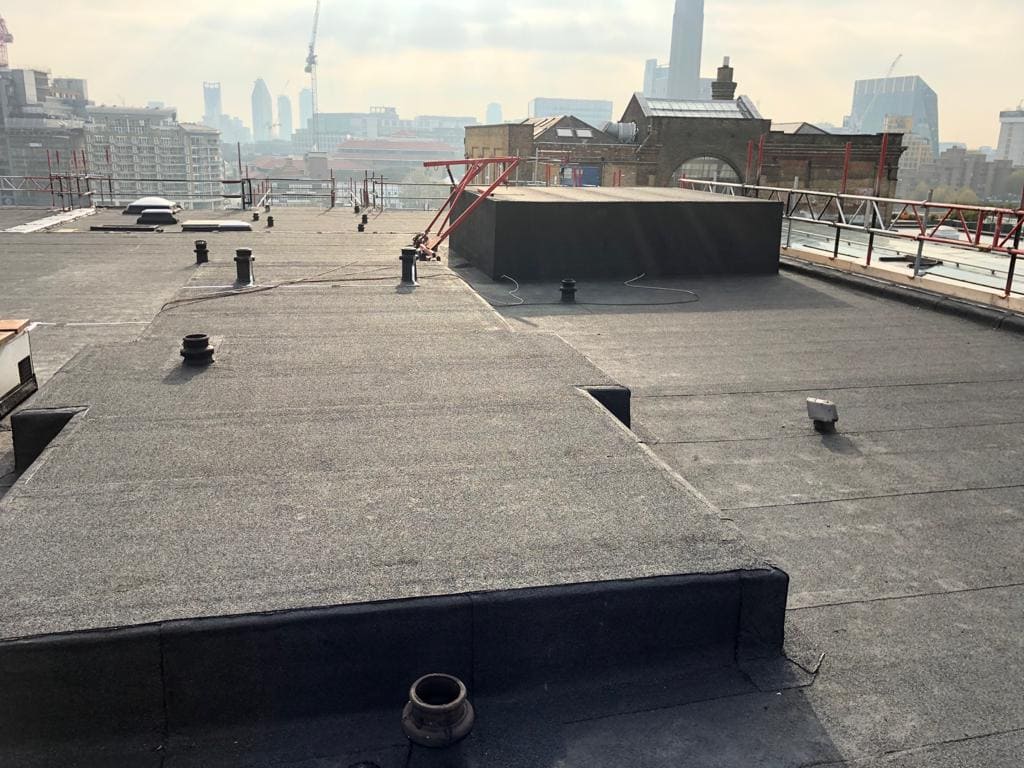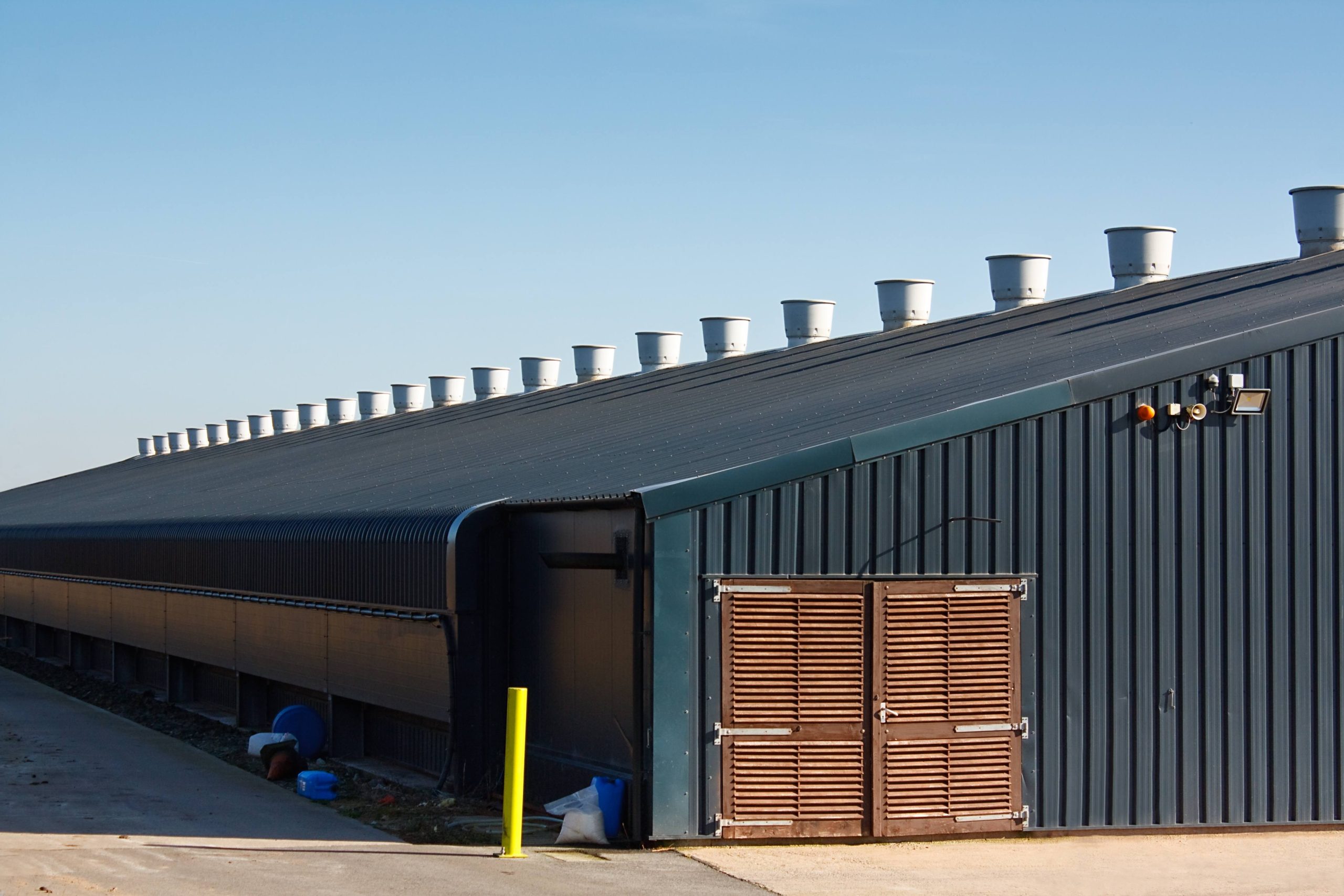Here are some of our most frequently asked questions About all things Industrial roofs, from roof repair questions to asbestos removal; this article covers many questions you may have..
When do I need to repair my industrial roof?
If you begin to notice any leaks, loss of heat, cracking or buckling, mould/fungus growth, damaged vents or anything out of the ordinary, then it’s probably time for a repair.
Damage to your roof might not always be noticeable, so you must have regular inspections; we recommend having your industrial roof inspected every six months to ensure undetected or minor issues don’t escalate further. If you are still in doubt, book an appointment with a professional to diagnose the problem and find the solution you need.

What is an Industrial roof?
An industrial roof is a specialised roofing system for big commercial or industrial buildings, tailored to meet their unique structural and functional needs. It differs significantly from residential or smaller commercial roofs and is commonly seen in warehouses, manufacturing plants, and distribution centres.
How long does a new industrial roof last?
The lifespan of a new industrial roof can vary depending on several factors, including the type of roofing material used, the installation quality, weather conditions, and maintenance practices. Here are general estimates for the lifespan of common industrial roofing materials:
- Metal Roofing: Metal roofs, such as those made of steel or aluminium, can last 40 years or more with proper maintenance.
- Single-Ply Membranes (TPO, EPDM): Single-ply roofing systems typically have a lifespan of 20 to 30 years, though this can vary based on specific conditions.
- Built-Up Roofing (BUR): BUR roofs, consisting of asphalt and reinforcing fabric layers, can last around 20 to 30 years.
- Modified Bitumen: Modified bitumen roofs, often used in industrial settings, have a lifespan of approximately 20 to 25 years.

It’s important to note that regular maintenance, prompt repairs, and adherence to recommended inspection schedules can significantly extend the life of an industrial roof. Additionally, environmental factors, such as severe weather conditions or exposure to industrial pollutants, can impact the roof’s longevity.
To get a more accurate estimate for your industrial roof, it’s advisable to consult with a professional roofing contractor. They can assess your roof’s condition, consider local climate conditions, and provide tailored recommendations for maintenance and potential replacements based on the roofing material used.
How Long is the installation process?
On average, installing a new industrial roof can take anywhere from a few days to several weeks. The size of the building, the type of roofing material, and the intricacy of the design contribute to the overall timeline.
Each industrial roof is different. Therefore, the installation process and roofing process differ from building to building, and outside factors like weather conditions can also contribute to long installation times and delays; however, once your roof has been inspected and a solution has been arranged, we will have a better understand and would be able to give a more accurate timescale for you.
As always with our industrial roof installations and repairs, we always keep our customers up to date and inform them whenever a schedule or plan changes.

What should I do if I think my industrial roof contains asbestos?
If you suspect your industrial roof may contain Asbestos, taking immediate action to assess and address the situation is crucial. Asbestos is a hazardous material that poses serious health risks when disturbed. Here are the steps you should take:
- Avoid Disturbing the Material: Refrain from any activities that could disturb or damage asbestos-containing roofing material.
- Isolate the Area: Restrict access to the suspected area using barriers and warning signs.
- Contact a Licensed Asbestos Professional: Reach out to a certified asbestos abatement contractor for inspection and testing.
- Professional Asbestos Testing: Allow professionals to collect and test samples to confirm asbestos presence.
- Receive Asbestos Abatement Plan: If Asbestos is confirmed, obtain a professional abatement plan that complies with local regulations.
- Notify Authorities (if required): Follow local regulations regarding notification of authorities about asbestos presence.
- Follow Proper Safety Protocols: Ad adheres to strict safety protocols, including proper PPE during removal or encapsulation.
- Keep Employees Informed: Communicate with employees about risks, safety measures, and work restrictions.
- Post-Abatement Inspection: Conduct a post-abatement inspection for safety and effectiveness after removal.
- Consider Roof Replacement: Explore roof replacement options with asbestos-free materials, consulting with roofing professionals.
Always rely on licensed asbestos professionals to handle the inspection, testing, and abatement process to ensure safety and compliance. At Spencer Industrial Roofing, we are certified to remove Asbestos-contained cement sheets and help make your space safe again.

